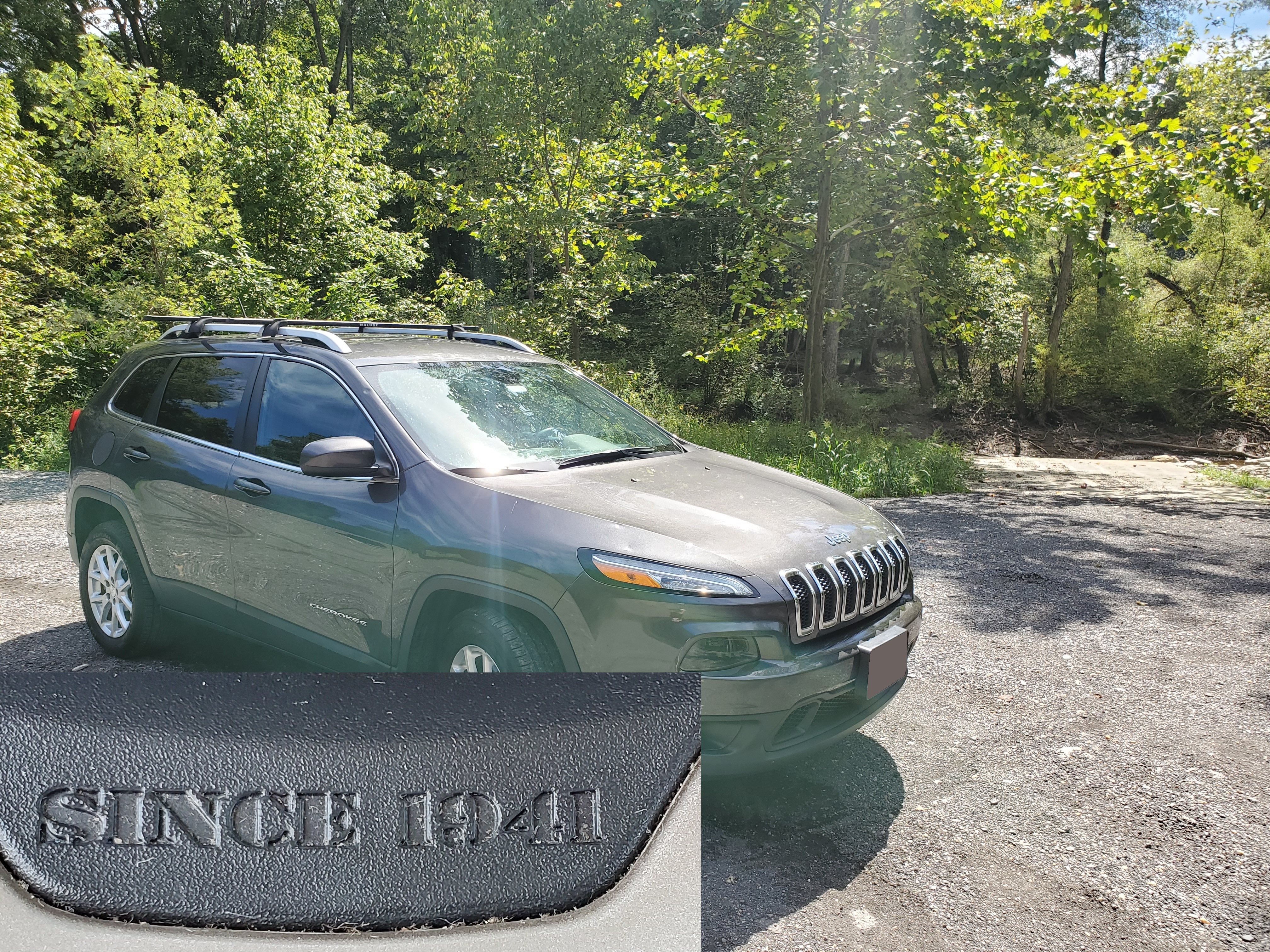
What's in a name?
The Jeep Cherokee has existed on and off as a family-friendly SUV since 1974, ever a downsized, more affordable sibling to the flagship Wagoneer or Grand Cherokee. Normally, that would be the end of it with regards to car branding, given the penchant automakers have for reviving old brand names (Bronco, Blazer, Eclipse Cross). However, several of Jeep's products bear the dubious, if not unique, honor of being named after real communities of people. In this case quite obviously, the Cherokee people of the southeastern United States. Unlike the four-wheeler named after them, the Cherokee were in fact not created by AMC in the mid 1970s, but were instead related to the Connestee people, from the 200-500s[1][2]. The Cherokee Nation has been recognized as sovereign by various treaties since 1725, and has been in contact with European settlers to the Americas since the 16th century[3], but that sovereignty was ignored by President Andrew Jackson's enforcement of the Indian Removal Act, resulting in the "Trail of Tears," in which not only the Cherokee, but other Native American tribes as well, were marched hundreds of miles, by threat of military force, out of their ancestral homelands westwards [4]. An estimated 4000 people died during this act of ethnic cleansing.
According to the Indian Health Service, Native Americans have a life expectancy 5.5 years below the US general population. Additionally, they "continue to die at higher rates than other Americans in many categories, including chronic liver disease and cirrhosis, diabetes mellitus, unintentional injuries, assault/homicide, intentional self-harm/suicide, and chronic lower respiratory diseases[5]. 28.2% of all Native Americans live below the poverty line, and on reservations that number is closer to 38-63% [6]. Because of the poverty, healthcare, food, and housing insecurity that grip reservations, in addition to environmental racism, Native Americans are a population at risk to many stressors, particularly the COVID-19 pandemic [7].

The Jeep Cherokee is not from the Southeast. It is from Toledo. While the nameplate originally came about purely as a two-door Wagoneer, it made its most lasting cultural impact with the second generation Cherokee, released by AMC in 1984. In addition to a smaller size than its predecessor, this Cherokee also featured an innovative integrated body-frame structure and a five-link coil spring front axle. These features enabled (relatively) light weight and nimble handling for its class, and the twin solid axles allowed for long suspension articulation and innately good off-road potential. The second-generation Cherokee was not only an off-road performer, but was also practical, efficient, and comfortable. In many ways it was a more truck-like alternative to the then-ailing AMC Eagle line. Once again, it appears that AMC pioneered not only the "crossover" market segment, but also that of the more SUV-like crossover, unibody almost-trucks with car-like features and legitimate offroad and utility potential.
For the 2014 model year, Jeep, now part of the Fiat Chrysler Automobiles conglomerate, had access to a much wider selection of engineering options, and the last vestiges of AMC's design influences had long since passed (apart from perhaps the broadest strokes of chassis design for the rear-drive LX/LD-platform cars). This new Cherokee was now a compact crossover SUV, built on a front wheel drive, truly unibody structure (unlike the odd "uni-frame" design of the XJ Cherokees). As with all major engineering revisions, this change to a more stereotypically "car-like" design was met with some criticism at the time, but it seems that the new Cherokee ultimately measured up to the offroading legacy it inherited, even if it did not necessarily break new ground. However, it should be immediately obvious to the reader that the new Cherokee was not immediately pigeonholed into an offroad enthusiast heaven, and many Cherokees on the road today seem to live out their days as family cars, as daily drivers. This is of course not surprising considering the skyrocketing popularity of compact crossovers, and immediately suggests that the Cherokee of today surely must lean more heavily into the practical, comfortable family car role than did its solid-axle ancestor. The only way to know for sure, of course, is to drive it.
What is it like?
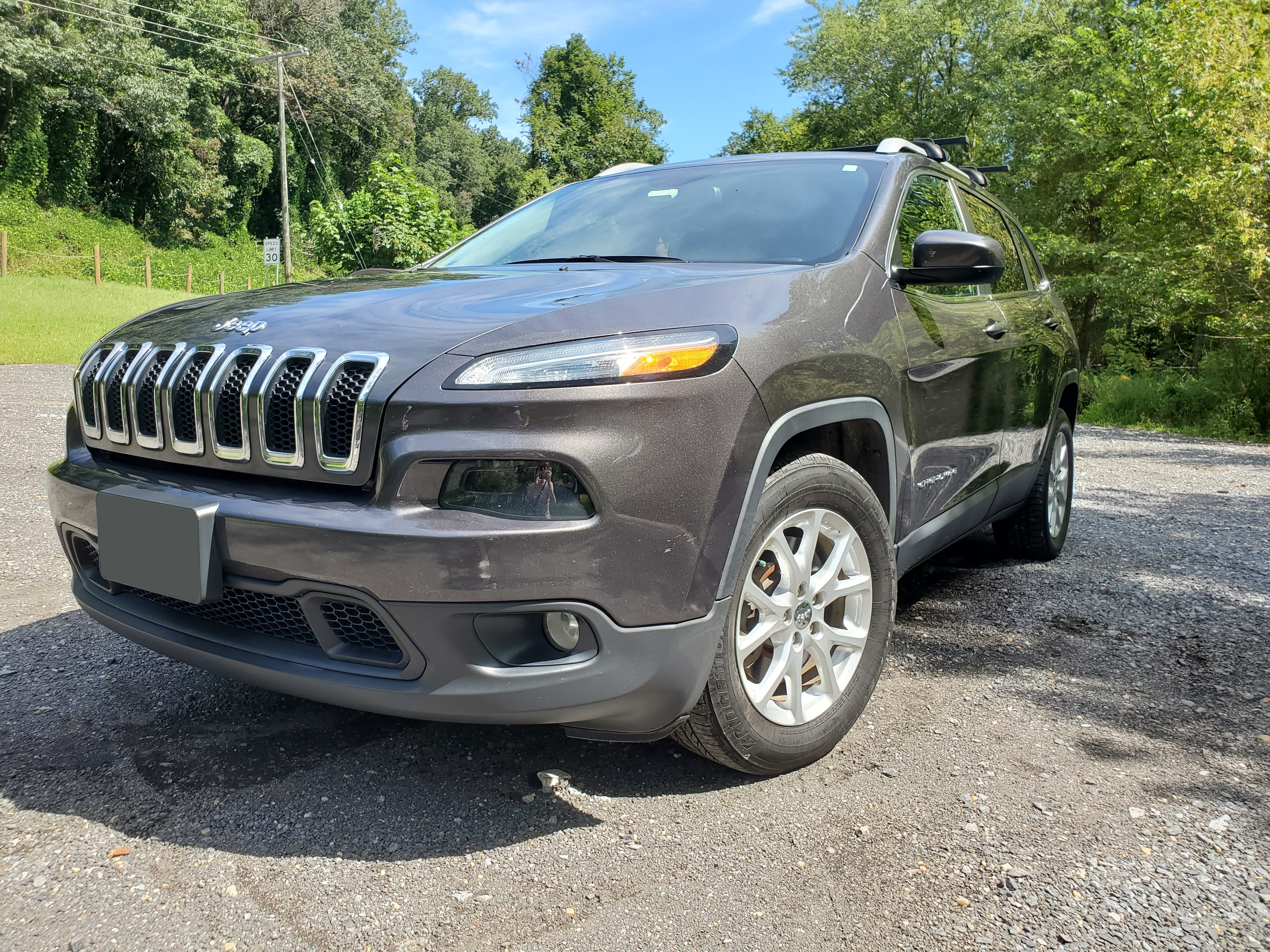
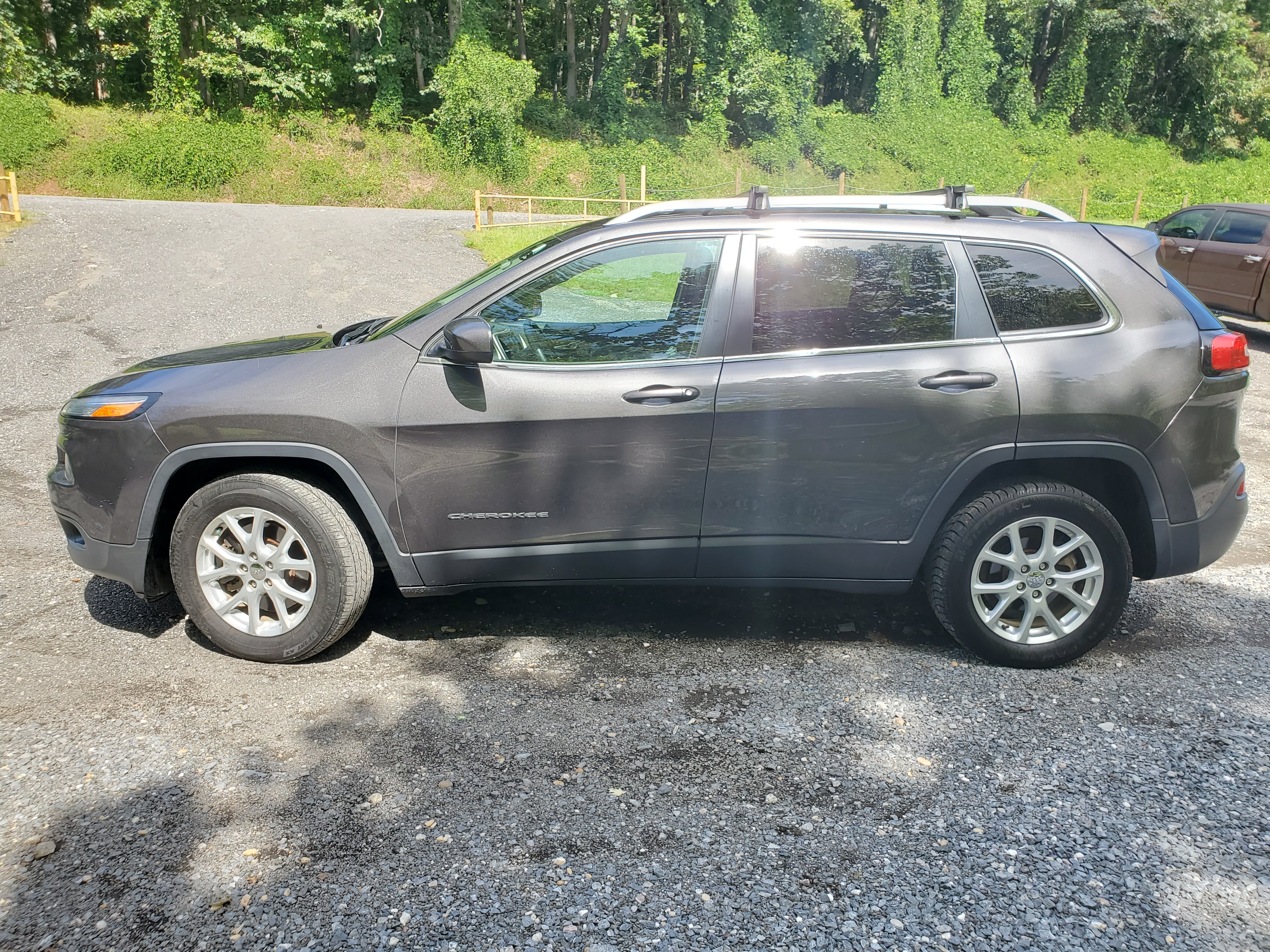

Externally, the Cherokee maintains the boxy, wagon-like styling of its predecessors. The deep side sills and lower bumpers make it look more planted and road-friendly than the old XJ, and its somewhat bulbous lines make for generous interior space. The Cherokee does a good job of combining the bulky station wagon-style shape of modern family crossovers with Jeep's athletic, truck-like aesthetic, and the Cherokee ultimately presents a more visually and stylistically cohesive exterior face than many of its competitors do. The exterior styling is of course bolstered by Jeep's traditional seven-slot grille and trapezoidal wheel arches, and the plastic lower body cladding gives a more off road sort of feel to the whole thing. Also notable is the Cherokee's front end, which follows the Nissan juke in vertically separating the running lights, headlights, and fog lamps. While this makes for a bizarre, buglike feel, it also maximizes visibility of the running lights and turn signals while lowering the headlights away from the rearview mirrors of lower cars like sedans. Full size pickups with their increasingly clifflike front styling could benefit from touches like this. In general, the Jeep Cherokee offers a contemporary, modern compact family SUV look while staying in line with Jeep's styling paradigm.
Inside, space is generous, with impressive headroom all around and plenty of shoulder room besides. The back seat is not particularly deep, but also benefits from the high ceiling. Sound deadening is quite good, though not perfect, and the cabin is very comfortable for long highway cruises. The high ground clearance characteristic of many crossovers makes the seats close to hip height, making the car friendlier for less mobile individuals, and the floor of the trunk is also quite high. However, the trunk compromises on overall space because of its thick underfloor spare tire compartment and the very large rear wheel wells. The rest of the interior is generally spacious and easy to navigate, and does not compromise too much on utility; really the only outstanding feature is another attempt at modular cargo management; all automakers seem to have their own clever ideas for modular utility systems, and Jeep's took the form of a mounting rail along the left side of the trunk area which can mount any number of different accessories (all Jeep-branded, of course). Perhaps the most genre-savvy of all of these is the Mopar-branded pet kennel; Jeep must have had a dog trainer on their design staff, as that demographic loves small crossovers.
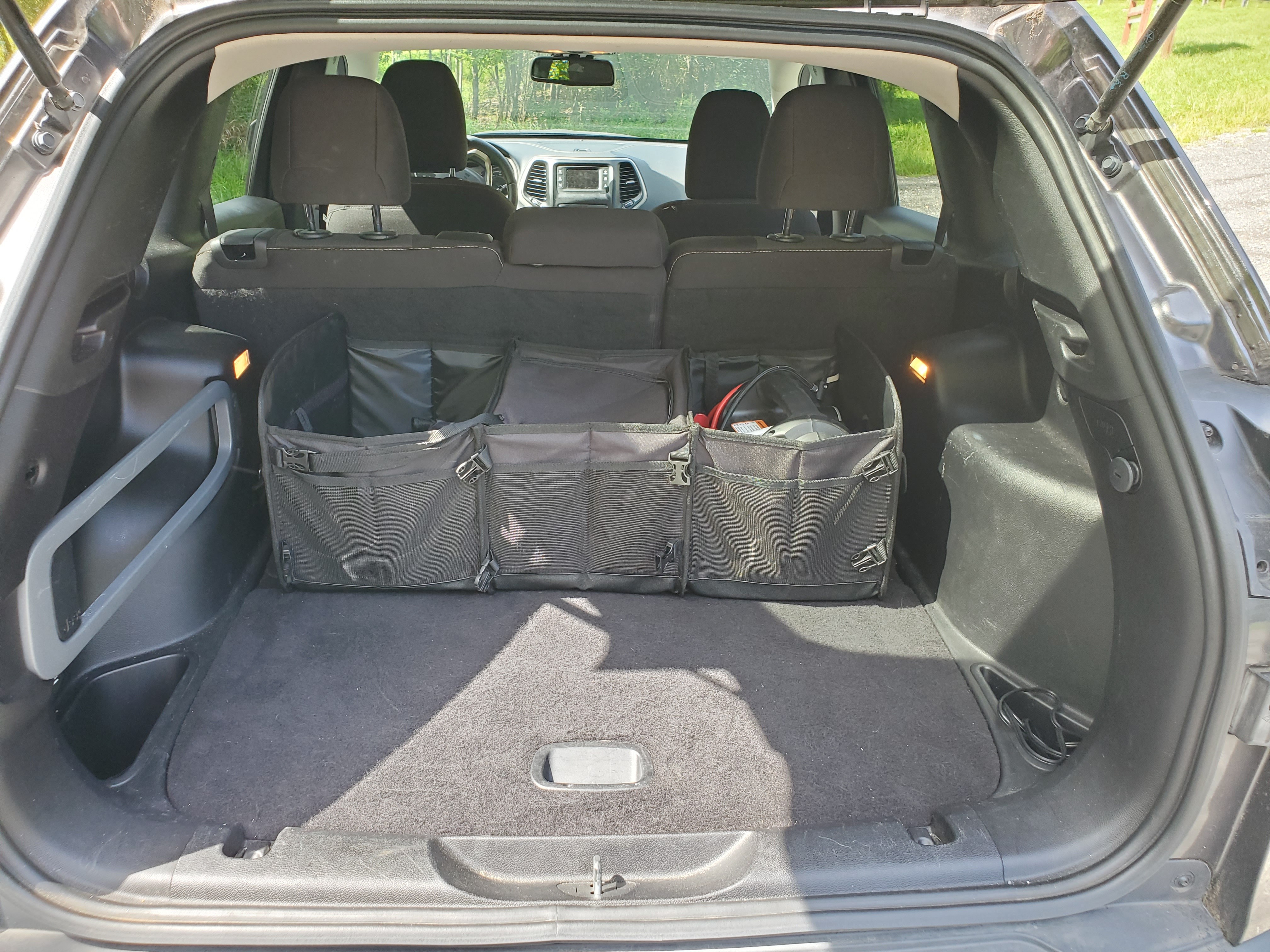
Up front, the cockpit offers plenty of storage space and fairly comfortable seats, though their bolsters are soft and rather ineffective. The infotainment screen is small and its resolution is lacking, but the infotainment interface itself is easy to navigate and use, and blessedly includes a "screen off" button. Nearly all HVAC controls are physical, apart from the vent mode selection, which is hidden inside menus in the infotainment system. This is a major issue for usability. Also rather odd is the placement of the traction control toggle button in the center of the HVAC cluster; this decision feels totally nonsensical and breaks completely from the typical approach of either placing it next to the steering wheel or shifter. Other than the curious button placement decisions, the only other element of the UX design that really stands out from the field is the massive size of not only the center stack buttons, but in fact basically every single control in the car. The steering wheel buttons, center stack controls, shifter lever, steering wheel grips, and electric parking brake switch are all oversized and lettered with large print, and generally have a good tactile feel. This feels as though the interior was designed to be friendly for users with deteriorating or limited eyesight, and while it seems childish and clumsy compared to the slick, ultraslim styling of today's car interiors, it offers distinct advantages in terms of real-life usability. The gear shifter is truly monstrous, however. It's like the size of an orange. If you have small hands, good luck.
The steering wheel is similarly bulky, but the big buttons are easy to read at a glance and are well-placed, and navigating the rather complicated menus of the instrument cluster multifunction display is intuitive. The display itself, arcane menus besides, is rather cleverly designed from a UI standpoint, as the user has three different persistent fields (left, right, and center) that they can assign to display any number of parameters, from the outside air temperature to the compass heading. This is the first car I have seen that gave the user that kind of control over their information environment, and is a welcome departure from the norm. It reminds me of the inclinometers that those old 4WD Tercel wagons had on their dashboards. Otherwise, the instrument cluster is par for the course, but the big temperature and fuel gauges are welcome. The driver's view of the outside world, however, is somewhat more flawed. The bulging, prominent hood intrudes on forward visibility as do the thick A pillars, and the high belt line all around together with the beefy D pillars means that all-around visibility, especially when changing lanes, is flawed. This is unfortunately a car that really needs blind spot warning.


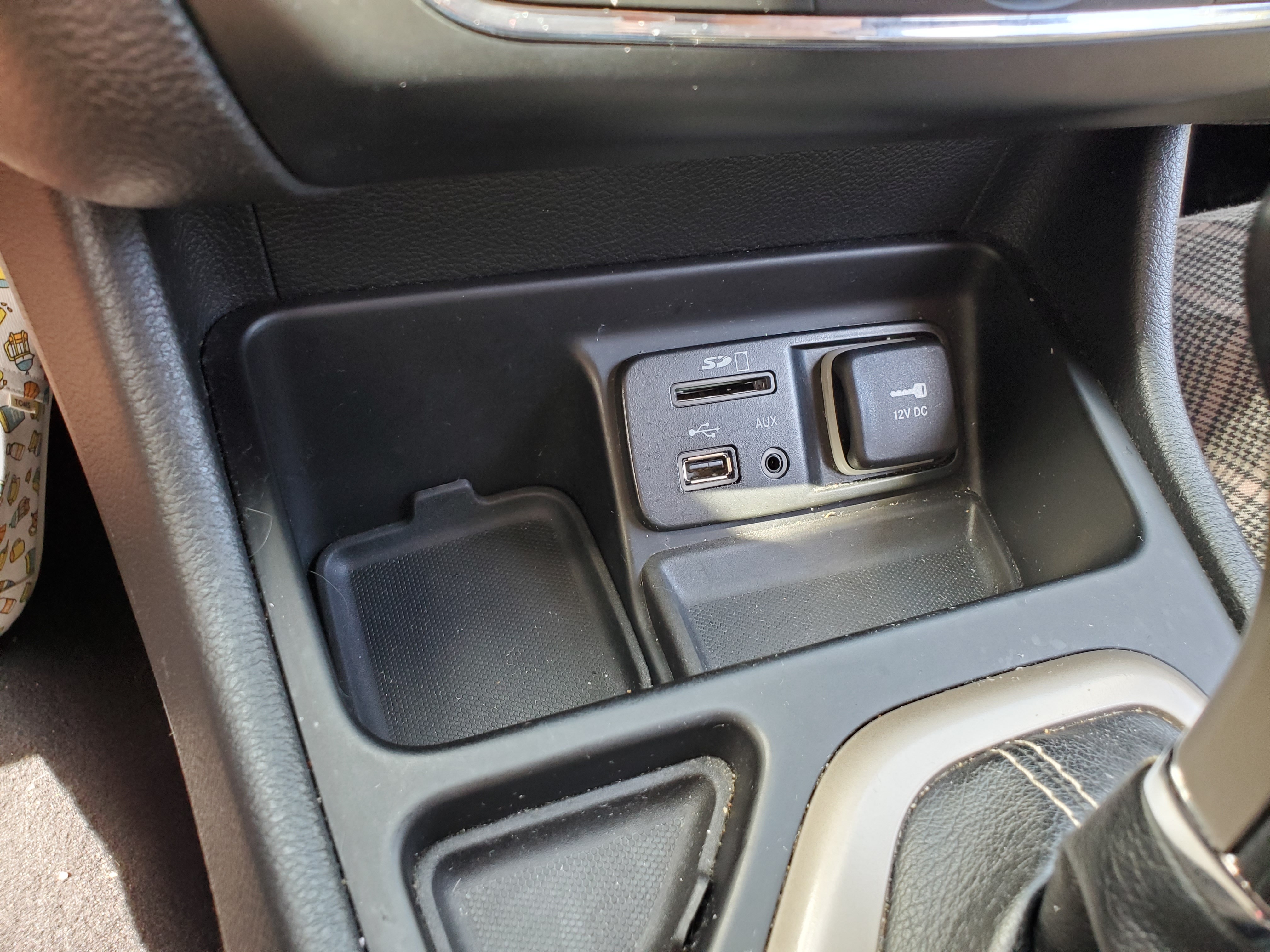
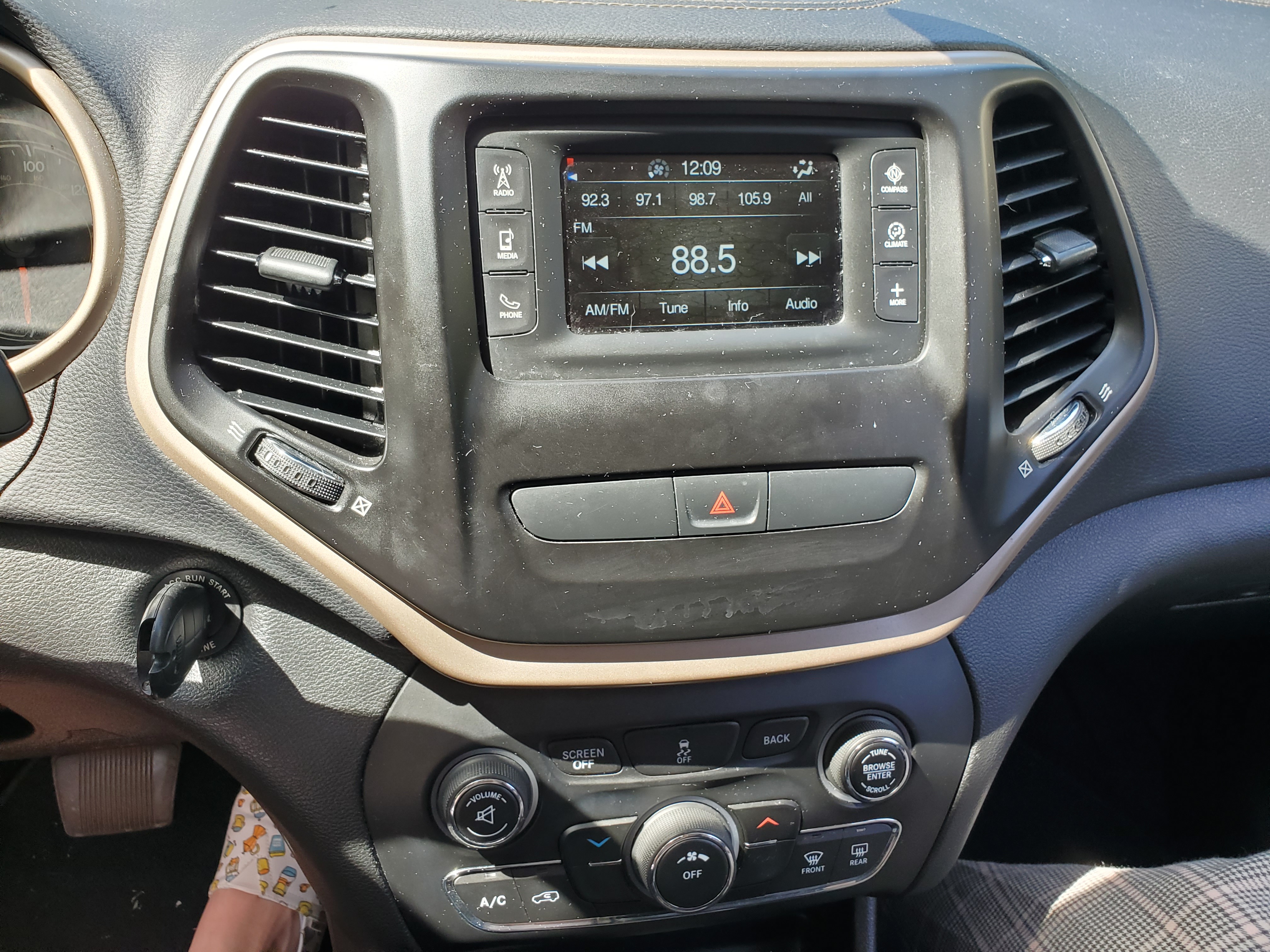
Broadly speaking, the interior of the Cherokee focuses first on everyday usability, and achieves this in a clumsy, hamfisted sort of way. Controls are oversized and chunky, and there is a dizzying array of storage spaces, but ultimately it doesn't really stand out in any particular way from the rest of the segment. Compact crossovers are a commodity now, and unless designers get really weird, these little SUVs end up feeling like they're just going through the motions, and by and large the Cherokee sticks by that. It seats five, it has a big trunk that can get bigger, it has lots of headroom, and it has many USB plugs. It competes in the segment without making too many waves. This interior feels like Jeep resting on their reputation laurels, certain that if you build it with seven grille slots, they will come.
How does it drive?
Perhaps Jeep was phoning it in with the UI, but what about the UX? Perhaps this little Wagoneer still has some surprises in store. We shall start with the driver's cockpit. As mentioned previously, all controls are chunky and oversized, and can be difficult to grip without long fingers, but tactile feel and materials are generally good. Perhaps the only objectionable part of the controls is the top-hinged gas pedal. Between its small size and long distance from the driver, it is difficult to control with finesse, and heel-and-toe gas/brake work is basically impossible. On the other end of this pedal is a 2.4 liter four-cylinder engine that uses Fiat's MultiAir VVT technology to produce 180 horsepower, 175 lb-ft, and 25 combined mpg. The motor shunts the Cherokee along well enough, and feels torquey in the mid end, and will happily rev all the way to redline, though its throttle response is a bit lacking. This powerplant is coupled to a nine-speed automatic transmission which boasts a wide ratio spread and a very low first gear, which in the 4WD version, works with a transfer case to provide a very low crawl ratio. On the street, the transmission generally doesn't hunt for gears, and shifts unobtrusively; in fact, it generally feels like driving a modern CVT. For comparison, the 2.5L Nissan Rogue from 2016, equipped with a CVT, got 28 mpg, enjoying a substantial advantage in city driving fuel economy. The shifter has manumatic control mode gate, but instead of selecting single gears, this merely limits the top gear the transmission is allowed to shift to. However, selecting a given gear with this will not prevent the transmission from downshifting. It is effectively impossible to command upshifts. While this makes little difference most of the time, it still feels like a compromise in controllability. However, in offroad driving situations, I suppose it makes more sense to be able to limit the top gear range than it does to simply select individual gears. Commanded gear changes do not happen particularly quickly, but shifts are still smooth. All-out acceleration with this drivetrain combination is not stunning, but is on about equal footing with the rest of the compact crossover segment, and makes the Cherokee feel more "sport utility" than "family car".
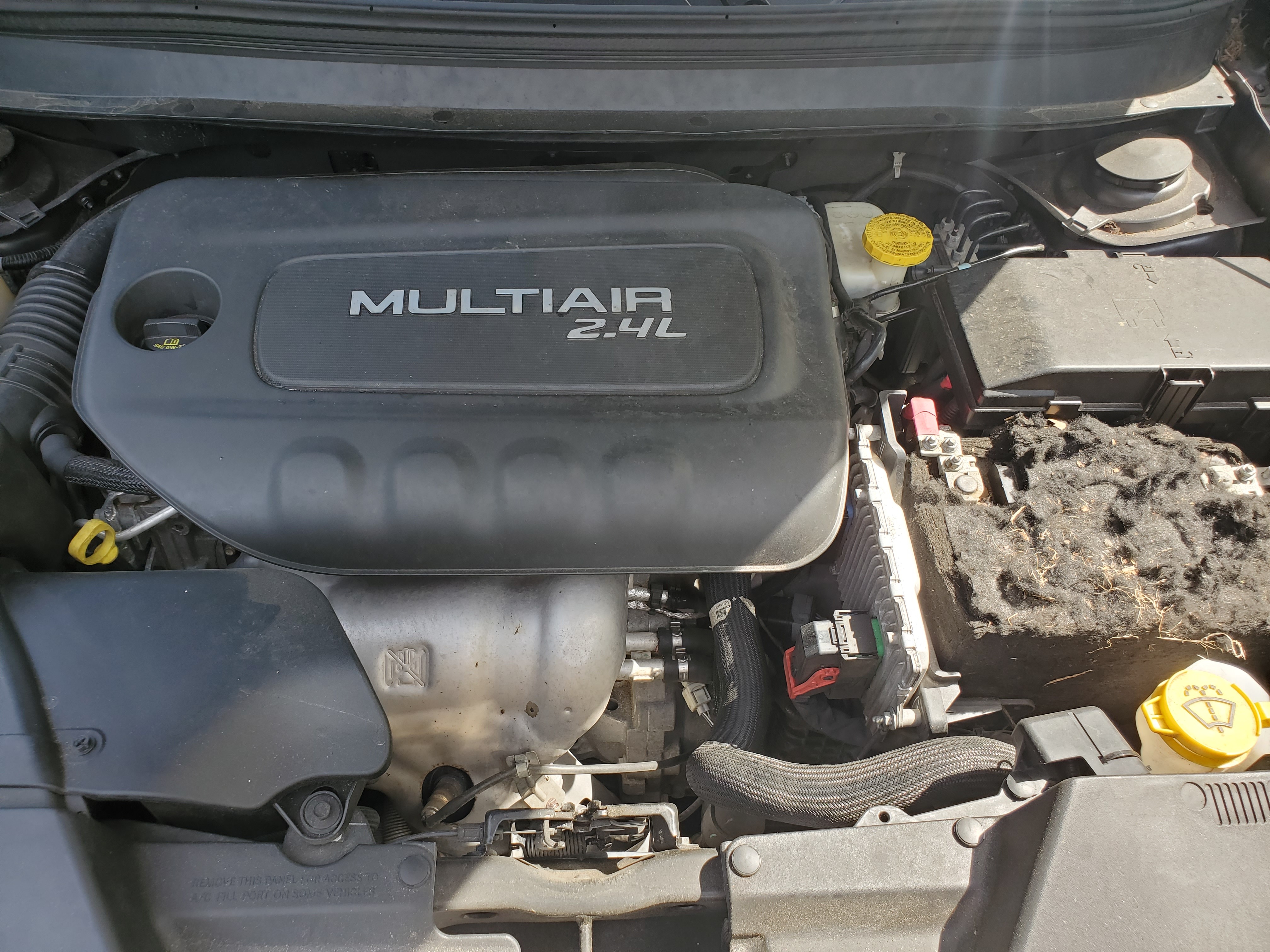
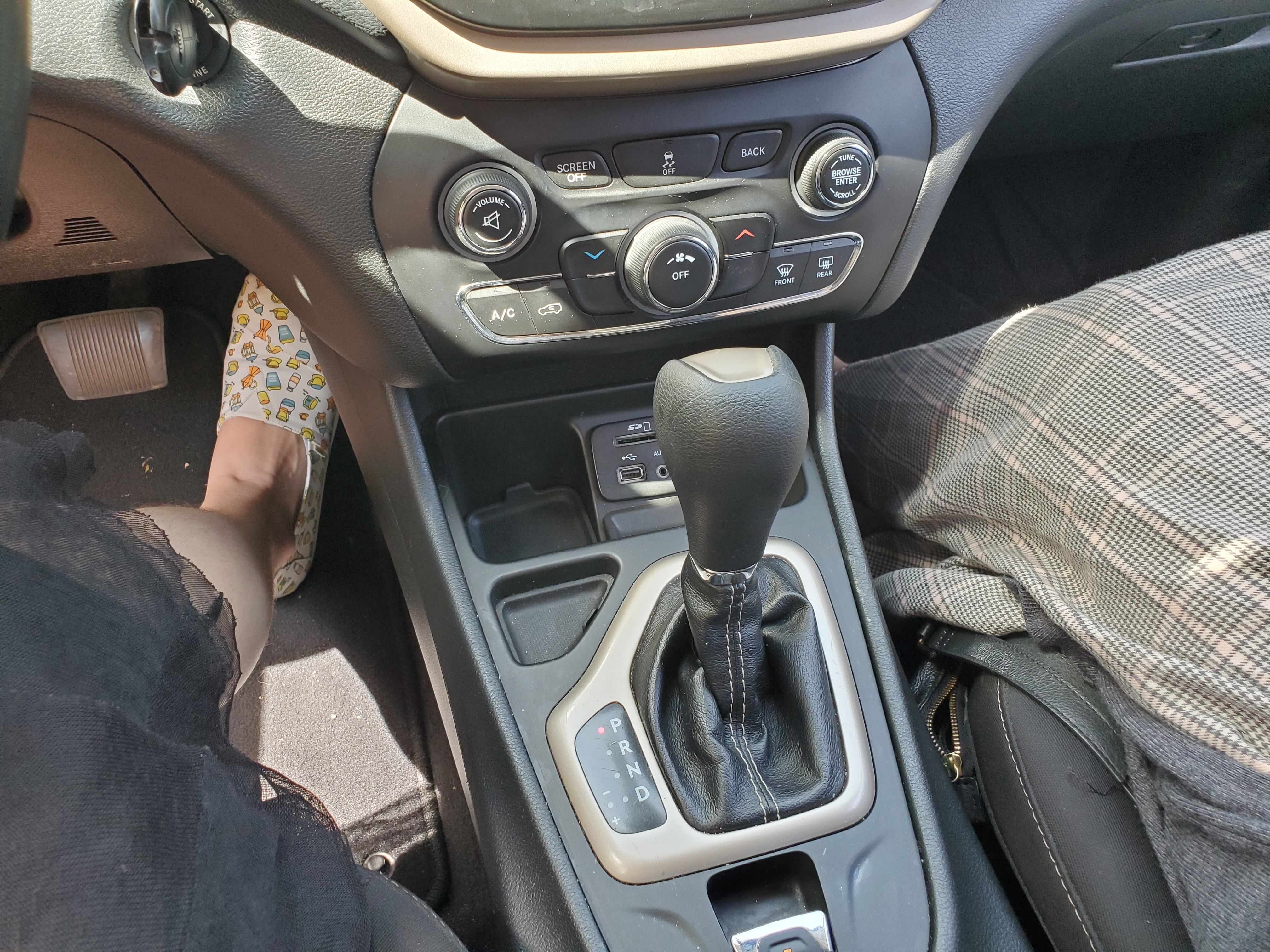
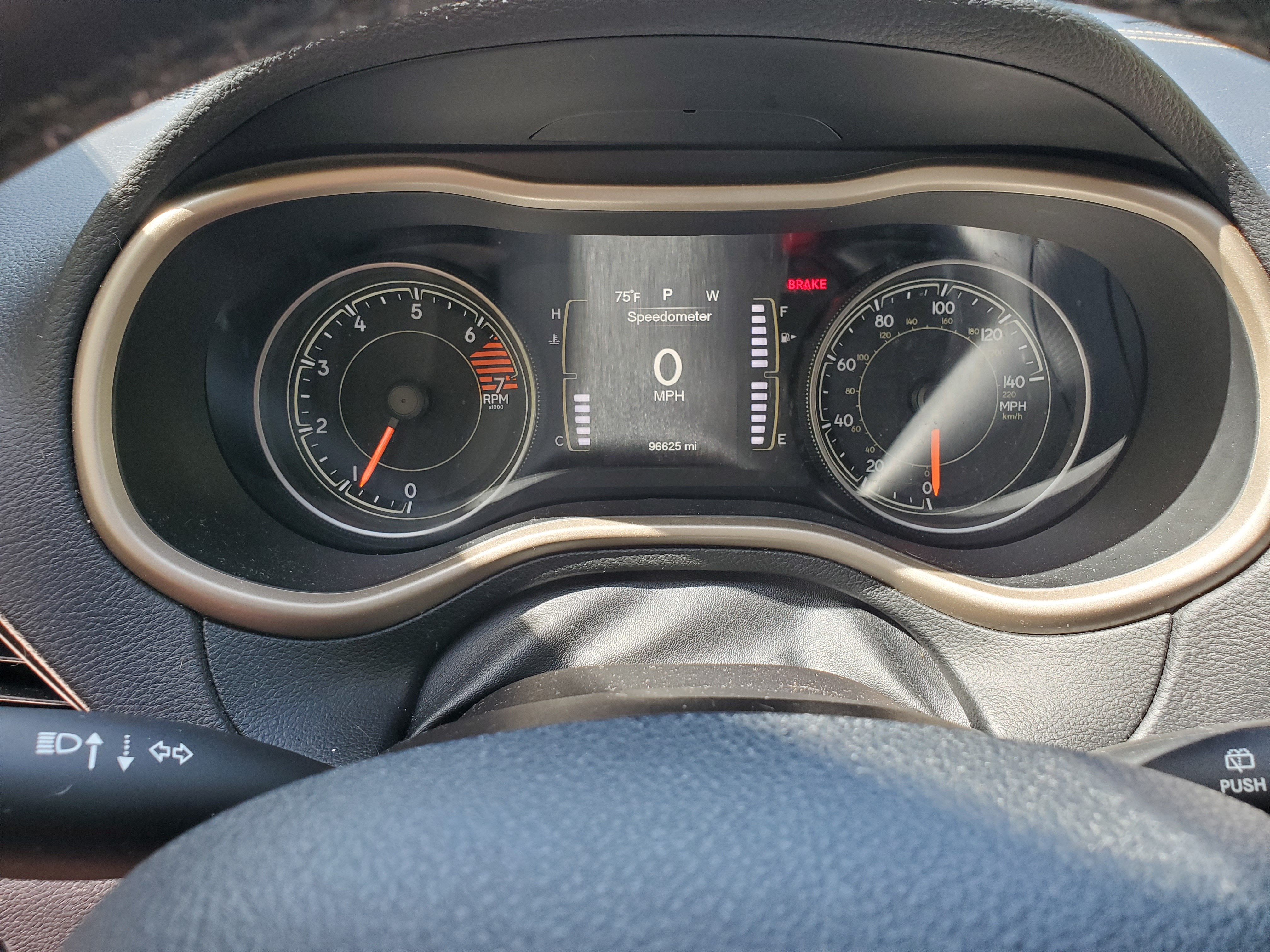
The Cherokee's ride is surprisingly firm and communicative. While it of course absorbs bumps and roughness, it does not feel overly insulating or isolated, and gives the driver a good idea of the surface they are on. Similarly, steering is well weighted and communicative at all but very low speeds, and the Cherokee feels at home both on highways and at low speeds offroad. However, its composure falls apart in everything between these cases. Body roll is substantial in basically any corner, and the fast, communicative steering ends up making the car feel cumbersome and heavy despite its small size. The tires struggle to grip the road, and the car does not shift its weight confidently in dynamic driving situations. While many crossovers have gotten lower, more car-like, and more capable in the bends, the Cherokee does not follow this trend in the slightest, and feels more like driving a truck or a '90s Dodge Caravan. While the driver feels fully in control of the vehicle, the vehicle does not feel in control of its traction and cornering, and feels hostile to any attempt at spirited driving. A small reassurance comes in the form of effective and controllable brakes, which work adequately and seem to have no major issues.
While words like "appalling" and "frightful" certainly come to mind when trying to describe the Cherokee's handling and roadholding, it would be unfair to hold the Cherokee to the same standards as normal cars and more car-like crossovers like the Mini Countryman or Nissan Kicks, and the fact that the Cherokee drives like a truck is certainly no mistake. After all, Jeep hasn't made a car since the Eagle got discontinued. Remembering that this is a compact/midsize family crossover from a brand built on a legacy of trucks and offroad SUVs, the Cherokee's handling makes more sense, and indeed, the availability of "trail rated" 4x4 trims allow the Cherokee to capitalize on its torquey drivetrain, high stance, and long suspension articulation. Even this FWD Latitude trim felt confident on gravel and handled large ruts and rocky surfaces with little fuss. The reader would be justified in asking at this point "why is this a family car when it behaves so trucklike?", but we must remember that family-friendly trucks are what Jeep has always done. The original Cherokee was a truck, the old Jeepsters were nearly trucks, the Grand Wagoneers were trucks; Jeep has, in a way, pioneered the pivot of trucks away from pure utility and towards families that require (or at least desire) more capability than cars can offer. This begs the question, however, of whether the Cherokee is truly a 4x4 at heart, or whether Jeep has simply designed a normal crossover to feel that way. The "trail rated" badges seem to reinforce the first point, but they are of course provided by Jeep themselves, not some impartial arbiter of offroad performance, so it is difficult to truly say. Once again, we must confront the fact that when it comes to cars, sometimes merely feeling like something is close enough as makes no difference to really being that. Is the Cherokee truly an affordable offroader with pocketbook-friendly fuel economy, or does it merely feel that way? Without driving a 4x4 Cherokee on true offroad surfaces, it is difficult to say.
Platitudes about 4x4 capability aside, however, we must remember that selling front wheel drive Cherokees was a deliberate decision of FCA's part, and for good reason: front wheel drive is cheaper, lighter, nets better fuel economy, and for the average user does not differ at all from all wheel drive and 4x4 systems in terms of capability. The front wheel drive Compass must of course be regarded as its own car, as having an existence that is not entirely defined by its lack of four wheel drive. So then, how does this car drive specifically in the context of front wheel drive compact/midsize crossovers? As mentioned before, its powertrain finds a muscular, torquey feel that many other crossovers miss out on, and the nine-speed transmission is quite competent, though fuel economy is disappointing, and the car handles quite well at speed, with a quiet cabin and plenty of passing power. However, the car loses any trace of composure on more dynamic, twisty roads, and generally feels desperate and uncertain in the corners. The heavy steering and firm ride make the driver feel more in touch with the car, which is a big plus for those who like a more engaging driving experience, but the Cherokee drives like a much heavier vehicle. Despite its (somewhat) small size, the Cherokee feels like a big body on frame pickup truck to drive.
Who is this for? What does it mean?
Crossovers these days fall into a few general boxes. At the small end, many are effectively just hatchbacks with a little bit of offroad dressing (think Hyundai Venue, Nissan Kicks, Chevrolet Trailblazer). There are also plenty of compact-midsize family-oriented crossovers that maximize family utility by just being taller station wagons, like the Chevrolet Equinox, Nissan Rogue, and even the Dodge Durango or Ford Explorer. Both of these design paradigms reflect the real material function of modern crossovers: These are truly just taller, heavier road cars, family cars which compromise on handling and fuel economy in order to make the driver feel safer and make getting in and out a little easier. There are only so many ways to reinvent the family station wagon or hatchback. However, there are models that capitalize on other aspects of the crossover mix, cars which truly do focus on "sport utility" functionality while leveraging the construction, powertrain, and chassis engineering characteristics of normal cars. Think of the Ford EcoSport, the new Ford Bronco Sport, or even the Honda Ridgeline. It would be easy enough to say that the Cherokee falls into the latter box; rather than being a crossover car, it is more of a crossover SUV, with a driving experience to reflect that distinction.
There are plenty of SUV-heavy crossovers out there, however. Does the Cherokee stand out in any meaningful way from this huge, saturated market? In its front wheel drive guise, it certainly doesn't seem like it. With the 3.2L V6 and four wheel drive, Cherokee trims like the Upland or Trailhawk gain substantially more capability, and come more into their own as a unibody compact SUV, much like the vaunted XJ Cherokee, but FWD trims lose out on the performance to back up their user experience. Simply put, the front wheel drive Cherokee feels like a compromise, with too many flaws that are either answered by higher trim levels or not addressed at all, and a user experience that is similary designed around promised capability that most users simply will not engage with. So then, with so many front wheel drive Cherokee trims, and so many Cherokees on the road, who in the world is buying these things?
What does the Cherokee offer, then, in terms of the meaning that it gives its buyers? What are they buying into by choosing a FWD Cherokee? Primarily, it seems that they are buying into simply having a Jeep: The only outstanding elements of the user experience are the chunky controls, curious ride and handling, and tolerance to offroad conditions. Outside of these, the Cherokee is just...average. The Cherokee offers very little otherwise. In fact, it seems as though the Cherokee's entire identity as a car is simply reflexive of the consumer's notions of what a family-friendly Jeep should be. Without the Jeep badge, this is simply yet another crossover, and in fact, not a particularly good one, given the compromises it makes. However, if one wants a Jeep, and those seven grille slots, then perhaps the Cherokee starts to make sense. If you want to be seen as a "Jeep Driver" then the Cherokee gives you all you want. It drives like a truck and has the everyday utility of a station wagon. I said a while back that there is no such thing as a "low performance car" because all cars are designed for different performance aspects outside of pure driving prowess. The Nissan Versa makes the dream of the open road accessible, the Chevrolet Volt was an affordable, sensible shot at an electric sport compact, and the Dodge Charger offers performance and luxury at a price point even family cars struggle to beat. So what about the Cherokee? What does it excel in? Higher trims, as mentioned before, offer more pulling power, more offroad capability, and more luxury. However, this front wheel drive Latitude trim does not. It feels like a base level designed to push customers towards higher trims. Is the Latitude Cherokee therefore an entirely reactionary thing, identified only by what is better than it? That seems fits with the Cherokee's relationship to its Jeep branding. Perhaps the Cherokee is indeed only a Jeep because we believe it is.
The Jeep Cherokee is a car that relies heavily on symbolism in order to textually function. It uses the aesthetics of ruggedness, of offroad performance and trucklike handling, in order to construct its Jeep image. Buying a Cherokee and truly engaging with it, not merely using it as something with four wheels and five seats, requires buying into that Jeep image, that identity. Thusly, the Cherokee is for people who, above all else, value the Jeep image, not the Jeep reality. The Cherokee does not excel at much of anything, including that Jeep-ness (Jeepitude? Jeepishness?), which otherwise might be considered to be its foremore performance aspect, because it simply does not have to. To actually excel at those things would be to compromise its viability in the massive and heavily saturated compact-midsize family crossover market. The Cherokee is, because of market forces, unable to truly seek a standalone identity, because to do so would compromise its actual competitiveness and consumer appeal. Just as its name is meant to call to mind some misguided fetishization of Americana, durability, and strength, the Cherokee itself calls to mind all the qualities that Jeeps are supposedly characterized by.
Perhaps I am being too harsh. Perhaps Jeep had little choice other than to make the Cherokee yet another commodity crossover. But at the same time, what is the Jeep brand now, if not just a constructed fantasy identity of ruggedness and Americana superposed atop a range of family crossovers? If the Cherokee is a victim of its origins, then is it not proper to question those origins? What is Jeep now? Perhaps the brand itself, not just the Cherokee alone, has lost touch with what really cemented it in American culture, no longer purely emblematic of soldiers on foreign soil and weekend warrior rock crawlers on our own. Yet Jeep is also FCA's family car volume seller, with stunning brand , and the conglomerate is surely loath to be rid of such a successful product line. The Cherokee might then be seen as the victim of circumstance, a car saddled with such opposing requirements of meaning (surely it must be difficult to both be a safety-conscious family wagon and a free-spirited four wheeler) that it is forced to compromise on both. Perhaps Jeep has no choice but to beat on, a boat against the current, borne back ceaselessly into the past.
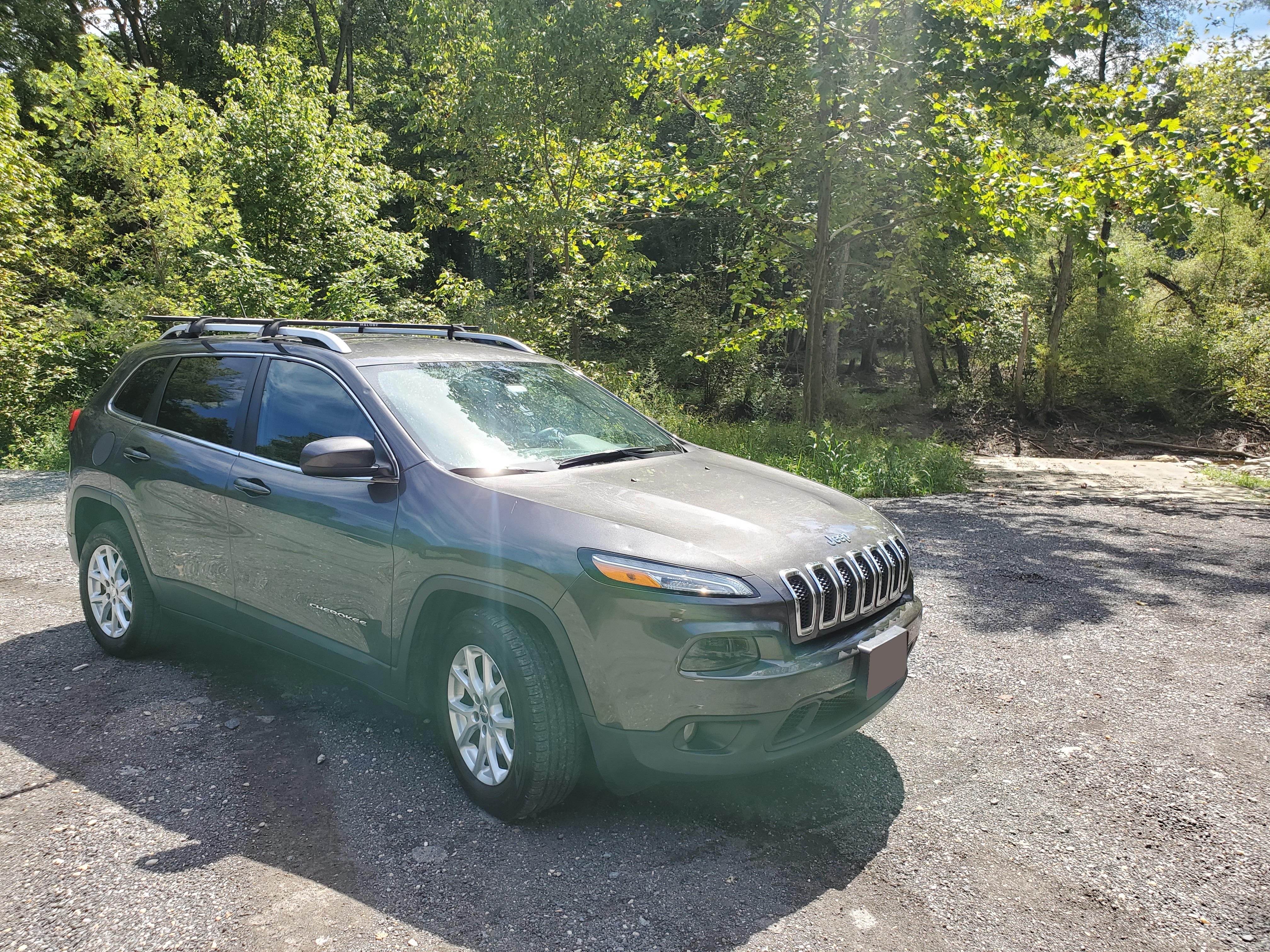
I rented this car with Turo, a crowdsourced car rental platform.